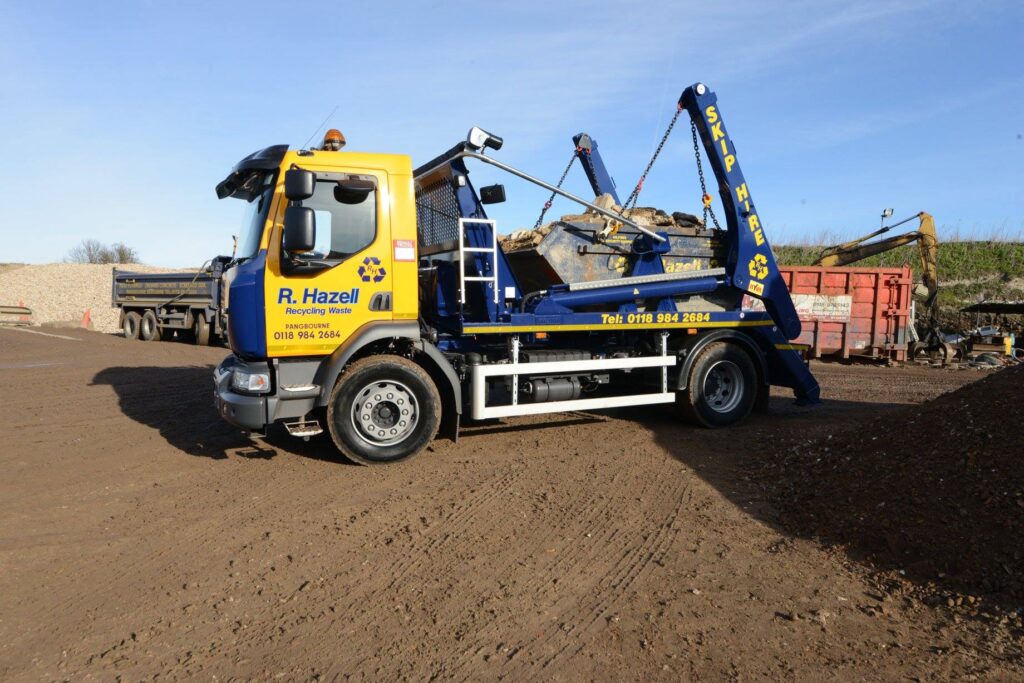Skip hire can be a real godsend, especially when disposing of your waste during a clear out or move, or during building works.
They come in a variety of sizes, so you can choose exactly the right skip for the job.
It’s worth totting up what you want to get rid of because if you choose one that’s too small for your needs, you’ll be at risk of overfilling it.
It’s really important not to overload your skip – nothing should protrude beyond its maximum load capacity. Not only could it be really dangerous for yourself and any passersby, but you could also wind up with a hefty fine. It also won’t be collected! So overall, it’s worth avoiding this scenario!
Here is a further explanation of the dangers of overloading your skip:
The maximum capacity line on your skip is the highest point at which your waste remains stable – and if it topples, it should do so within the skip. If you overload that maximum capacity level, you risk objects falling out of the skip, potentially being dangerous. Even if they don’t hit anyone, they may damage other people’s property, or block pavements and access routes.
Removing, and then transporting, an overflowing skip is extremely dangerous. Any good skip company will refuse to transport an overflowing skip, as it poses a danger to themselves and others. You’ll have to remove any overloaded waste before they consent to remove your skip.
Filling your skip above the maximum load capacity point is against the law. You will be hit with a heavy fine if caught doing so. And if your waste injures somebody, you could face serious legal action. The fine is there to deter people from overloading their skips. You could also be charged with littering if your litter falls out!
All skips have a maximum fill line. For many, this is the top of the skip. The maximum capacity for your waste is indicated by a thick red “fill line” on the inside of the skip. Your waste should be level; even small protuberances over this line will likely be problematic.
If you’ve filled to maximum capacity and you still have waste to get rid of, you’ll need to hire another skip.
That always ends up more expensive than if you had just hired the next size up n the first place, which is why it’s a great idea to work out how much waste you have to dispose of before you hire.
Just because you only have to the maximum capacity line, it doesn’t mean you should chuck it in willy-nilly! You’ll be surprised just how much more you can fit in a skip if you load it intentionally and with a bit of forethought. The key is to break items down into their flat parts where you can. Separate them into four categories – flat items (eg cardboard, paper), tesselates (eg bricks, tiles), bulky items (eg appliances, furniture), and debris (sand, soil).
Start with your flat items. Lay them into your skip to cover the entire base. Then layer a second layer of flat items on top, and keep going until all your flat items are layered, filling the entire base each time.
Then move on to the tesselates. Lay these objects out across the whole base, covering all available space. Then layer up. These items are usually heavier so will weigh down the card and paper beneath, making more space.
Third, start the bulky items. Deconstruct them as far as possible – eg, remove chair legs from the base, break shelving into its constituent flat boards. Then lay this waste into the skip in layers, filling all available space. This is a bit like a game of Tetris – it might take a little thought to get all of these bulkier items fitting in the best possible way to maximise your space. Finally, your debris. This can be poured in, as it will run through and fill in any pockets of space in the skip.
If you need to hire a skip, contact Hazell & Jefferies Ltd today for more information.

